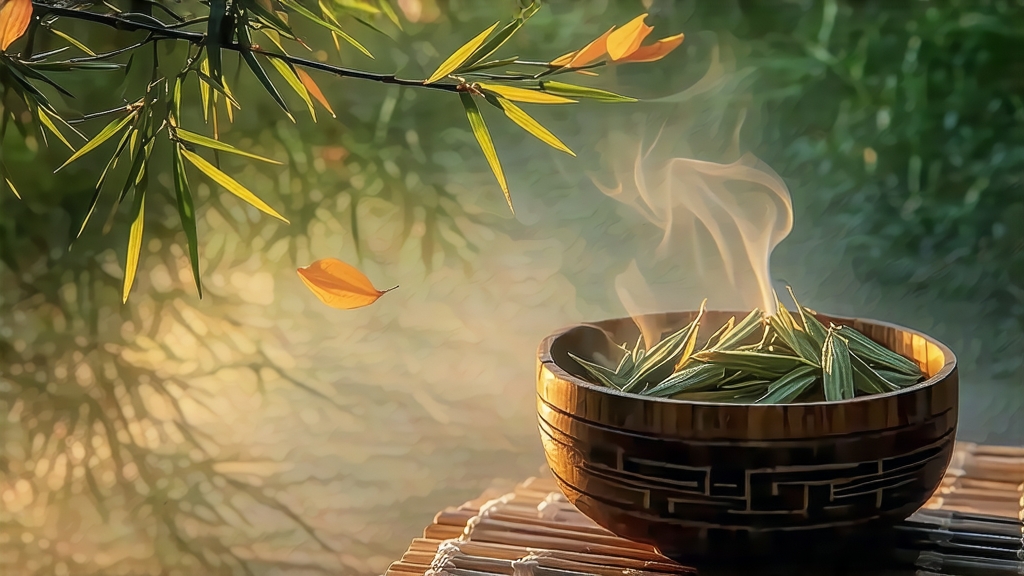
Tucked high above the Sichuan basin, where the first light of dawn has to climb almost a thousand metres of vertical bamboo forest before it touches stone, lies Meng Ding Mountain. For twelve centuries its name has been whispered in the same breath as the most coveted tea in the empire, yet outside China it remains almost a myth. Meng Ding Huang Ya—literally “Meng Ding Yellow Bud”—is the tea that gave yellow tea its name, the bud that emperors guarded like silk-route state secrets, and the leaf that modern drinkers have never heard of. This is its story, its craft, and the quiet ritual that can coax its apricot-sweet memory back to life in any kitchen from Kyoto to Kansas.
-
A bud in the edicts of Tang
The first written record appears in 808 CE, when Tang dynasty tax scrolls list “Meng Ding Huang Ya—ten jin, imperial tribute, sealed with wax and rider-posted to Chang-an within seven suns”. Only buds picked before Qingming—while mountain mist still clings to the leaf like breath on a mirror—qualified. The tea travelled in bamboo tubes lined with camphor leaves to keep it cold and fragrant, changing horses but never stopping, a green-gold baton in a relay that stretched eight hundred li. Song dynasty tea competitions elevated it further; court officials graded the infusion by the exact number of “white down” that floated upright like tiny sails—an early lesson in liquor clarity. When the Ming replaced cake tea with loose leaf, Meng Ding Huang Ya survived because its slow yellowing step could not be rushed by decree; it answered only to mountain humidity and the intuition of monks who had watched the same clouds for twenty generations. -
Geography that tastes like altitude
Meng Ding is not a single peak but a horseshoe ridge that traps cloud between two rivers. The soil is purple sandstone weathered into a gritty loam rich in selenium and zinc; the slope is so steep that terraces are carved into the ridge itself, each no wider than two out-stretched arms. Morning fog refracts light, slowing photosynthesis and stacking amino acids—especially theanine—into the tiny buds. By the time the pluckers arrive at 5 a.m., the leaf’s surface temperature is still 4 °C below the valley, locking in a cucumber-crisp green note that will later be coaxed into warm hay. Because the mountain sits at the collision point of the Sichuan basin’s humid air and the Tibetan plateau’s cool downdraft, the same plant variety—local Xiaoye zhong (“small-leaf species”)—yields a bud only half the size of a Hangzhou Longjing, but with twice the soluble sugars. Terroir, in short, is everything. -
The six-day secret: sealed yellowing
Yellow tea’s identity rests on a single, stubborn step called men huang—“sealed yellowing”. After the usual withering and killing-green (shaqing) over a 160 °C bamboo-roasted wok for exactly 90 seconds, the leaves are still 60 % moist. Instead of rolling immediately, they are wrapped in a double layer of steamed yellow cotton cloth and placed inside a bamboo box lined with wet kraft paper. For the next six days the box is opened only twice every 24 hours to release trapped CO₂ and check temperature, which must stay between 28 and 32 °C. Enzymes oxidise chlorophyll into pheophytin, turning the leaf colour from jade to antique gold; polyphenols dimerise, softening astringency; and a faint milky note—often likened to custard skin—develops. If the wrapper is opened too early the liquor stays green and grassy; too late and the leaf blackens, losing its signature “three yellows”: yellow dry leaf, yellow wet leaf, yellow liquor. No thermometer is used; the master gauges warmth by pressing the bundle against his cheek, the same way a baker knows proofing dough. -
Firing with memory
Once the yellowing is judged complete, the leaf is given a gentle charcoal bake for twenty minutes using local Qinggang hardwood that burns at a steady 70 °C. The goal is not to dry—moisture is still 20 %—but to fix the aroma. A final sorting removes any stem longer than a bud, leaving only the unopened spear tip and the tiny first leaf still folded inside like a paper fan. One kilogram of finished tea demands between 42 000 and 45 000 such tips, all plucked within the same seven-day spring window. The result is a tea that weighs almost nothing